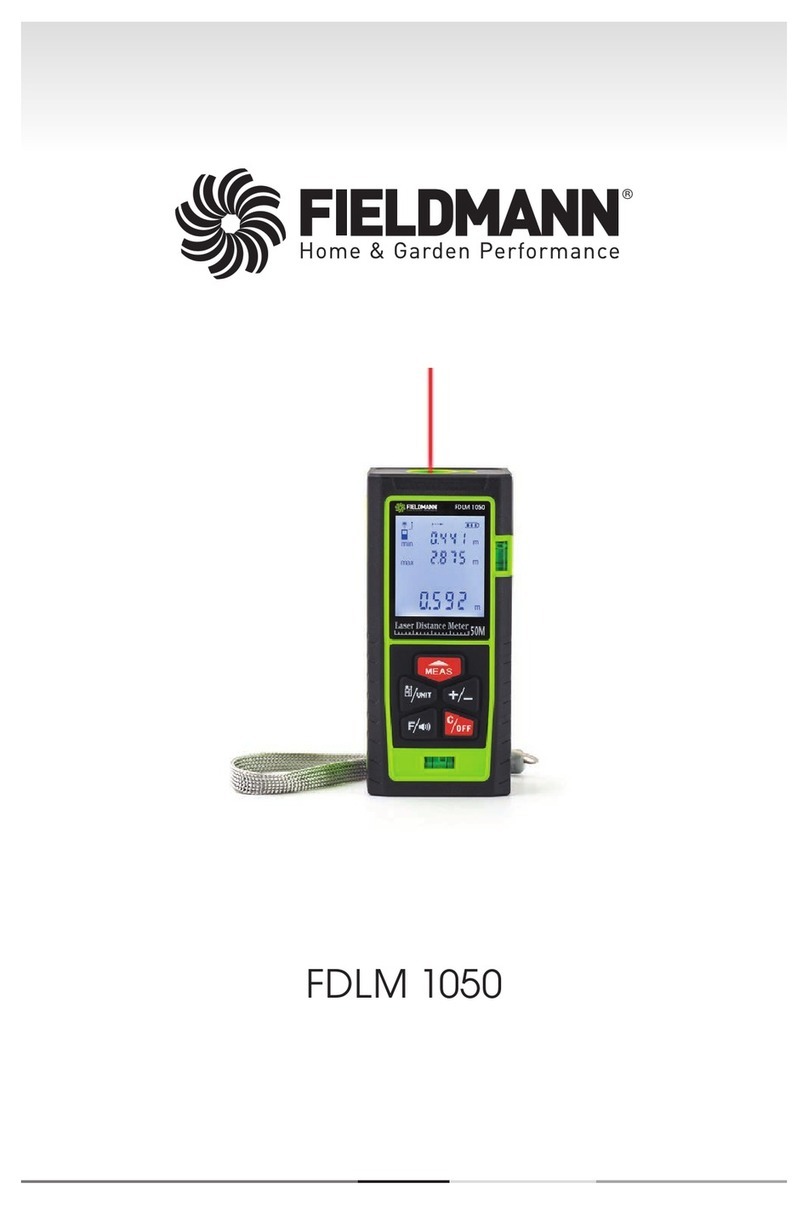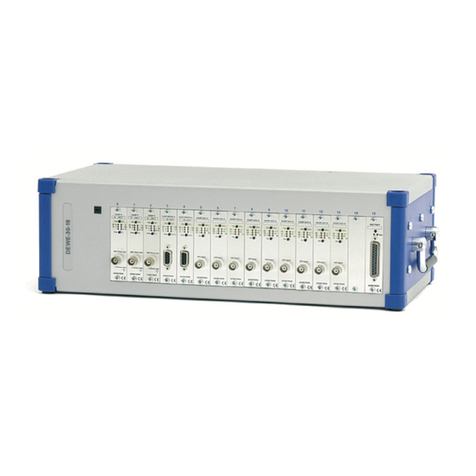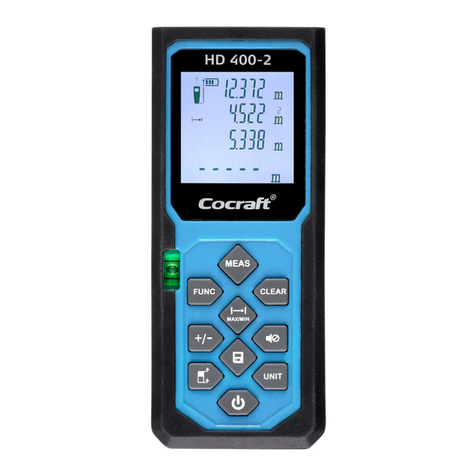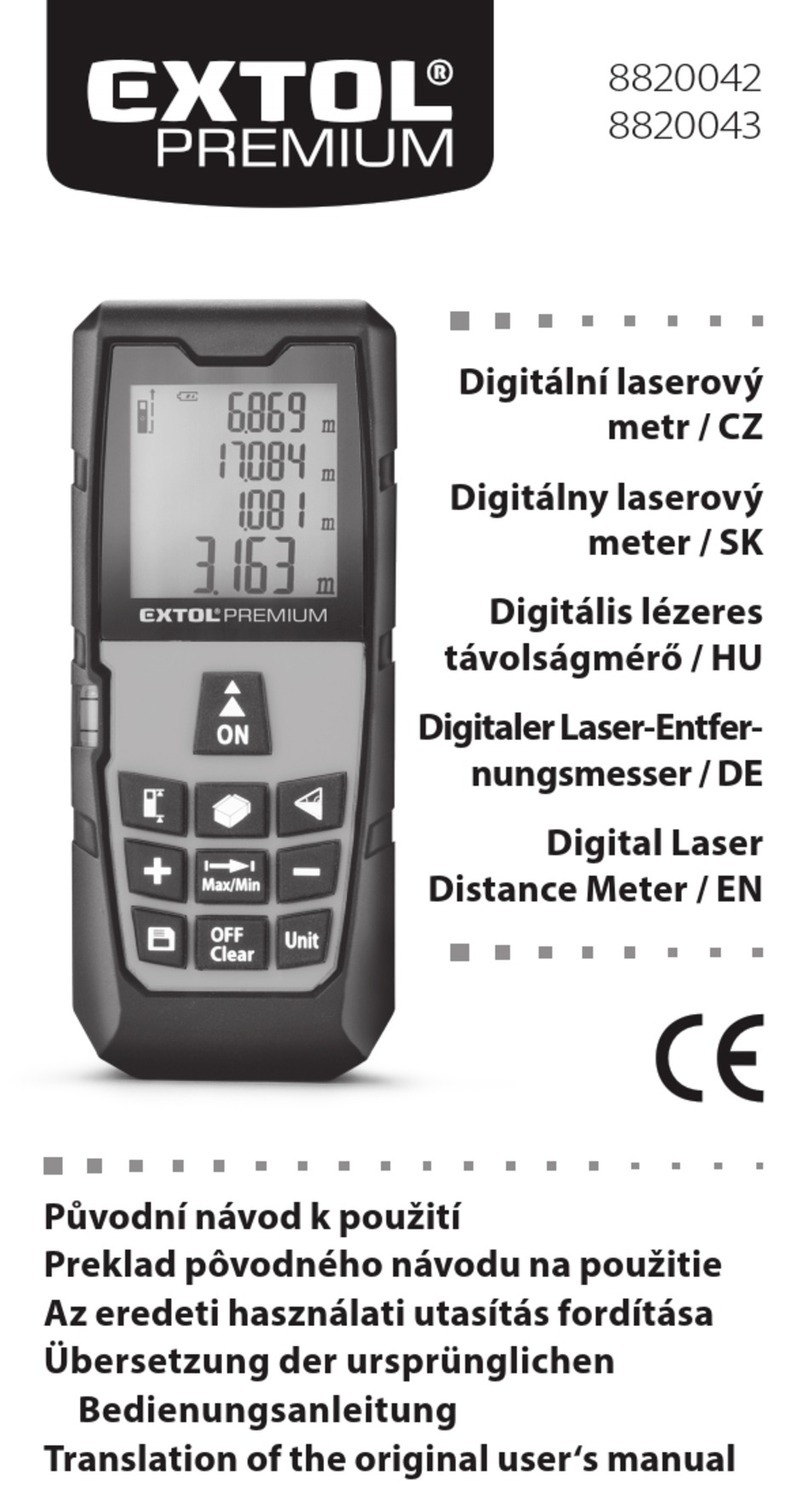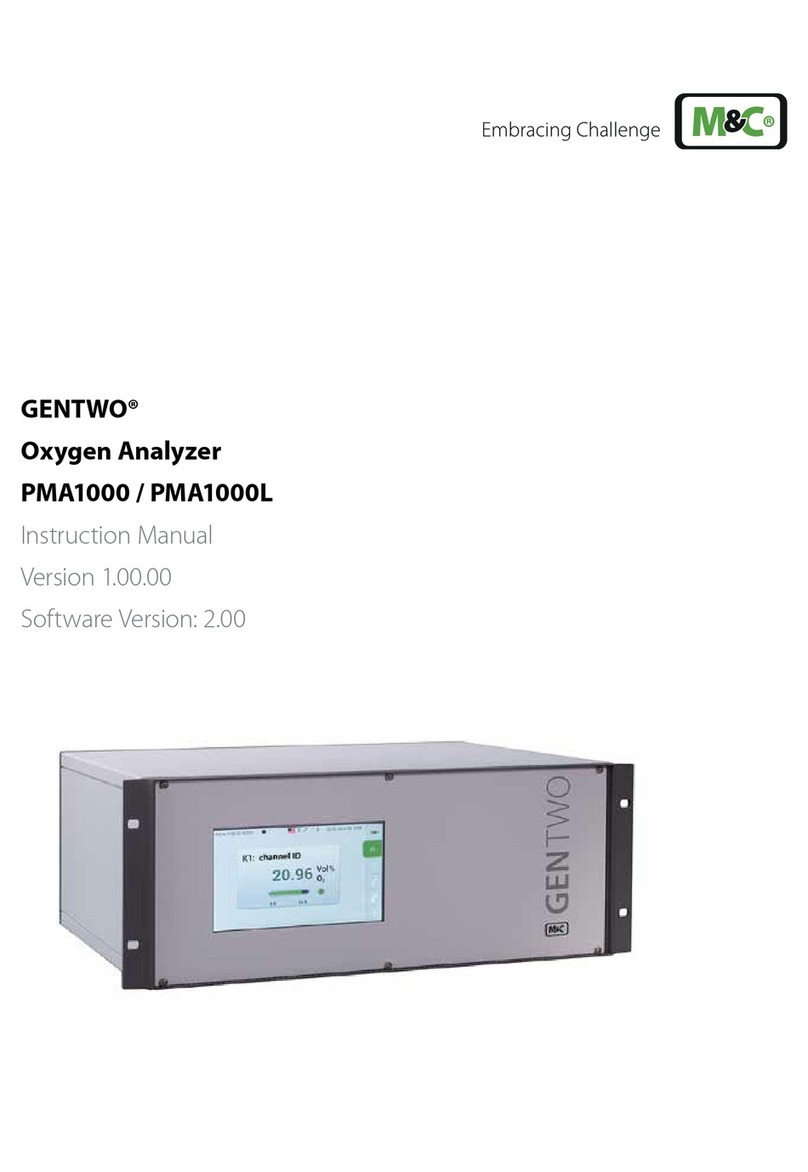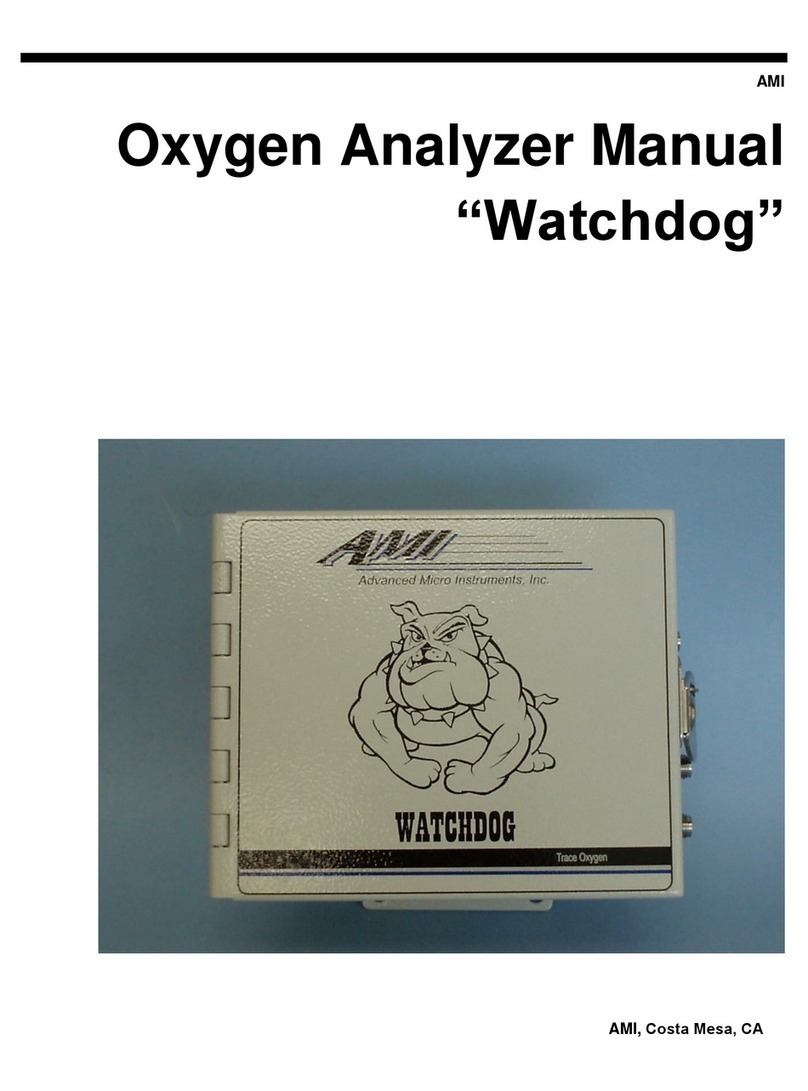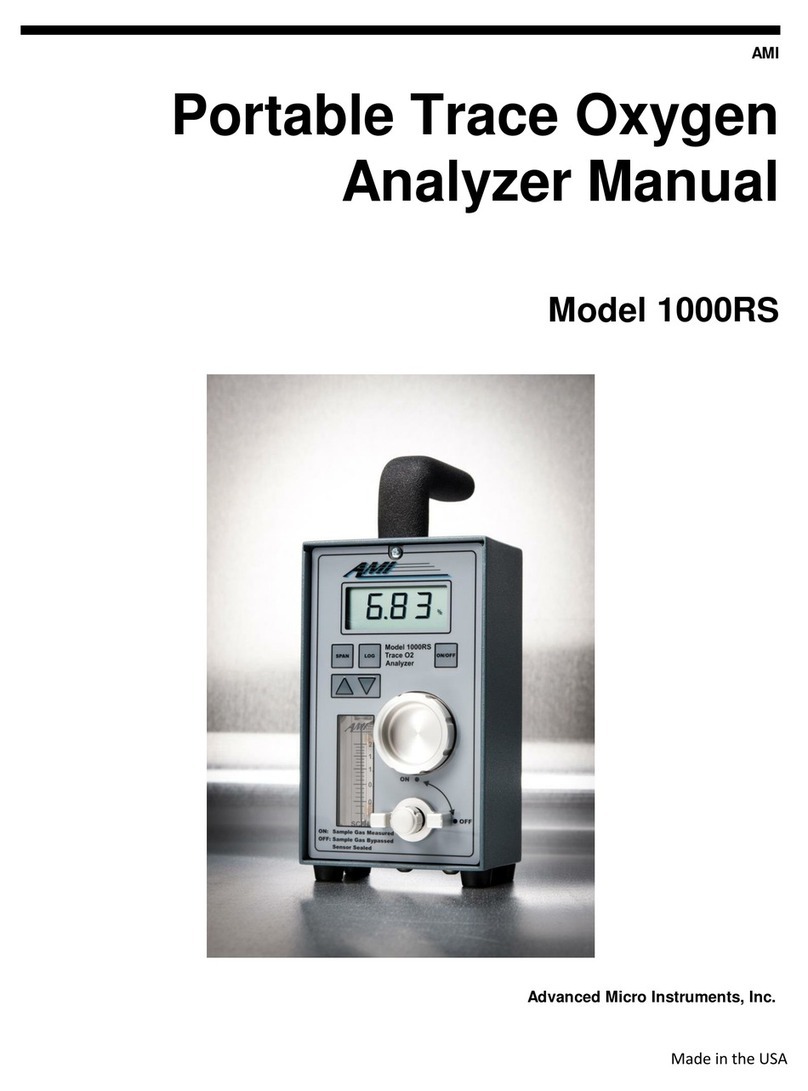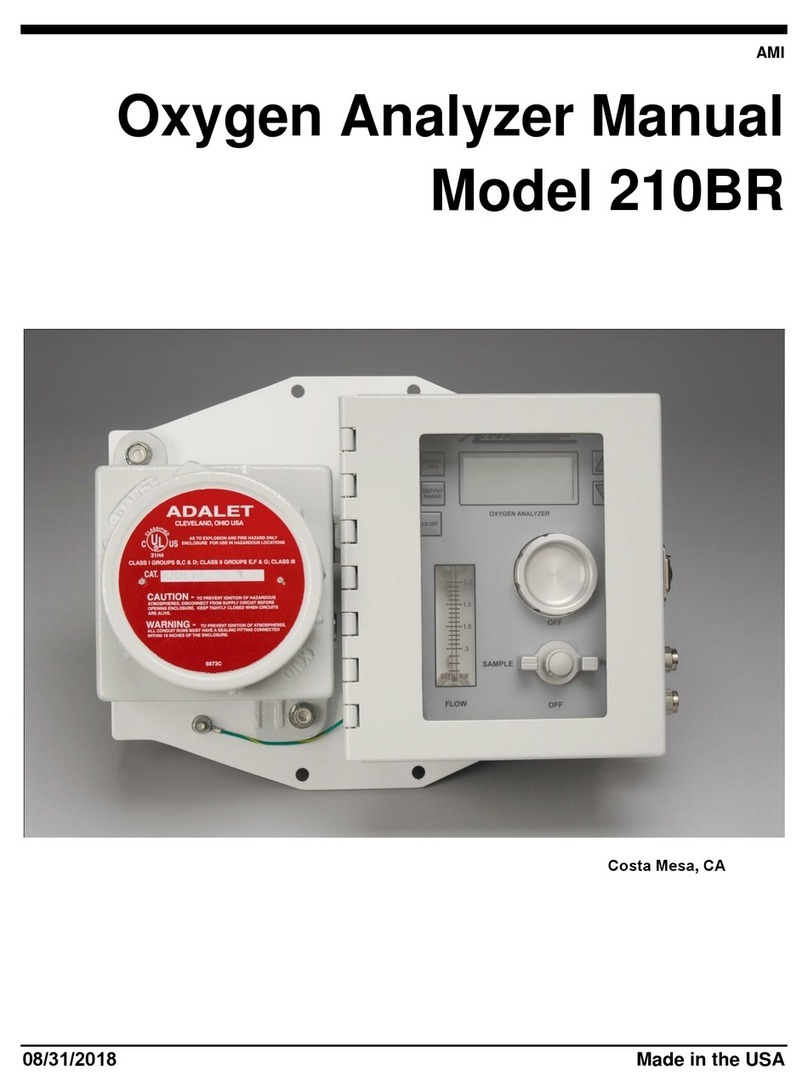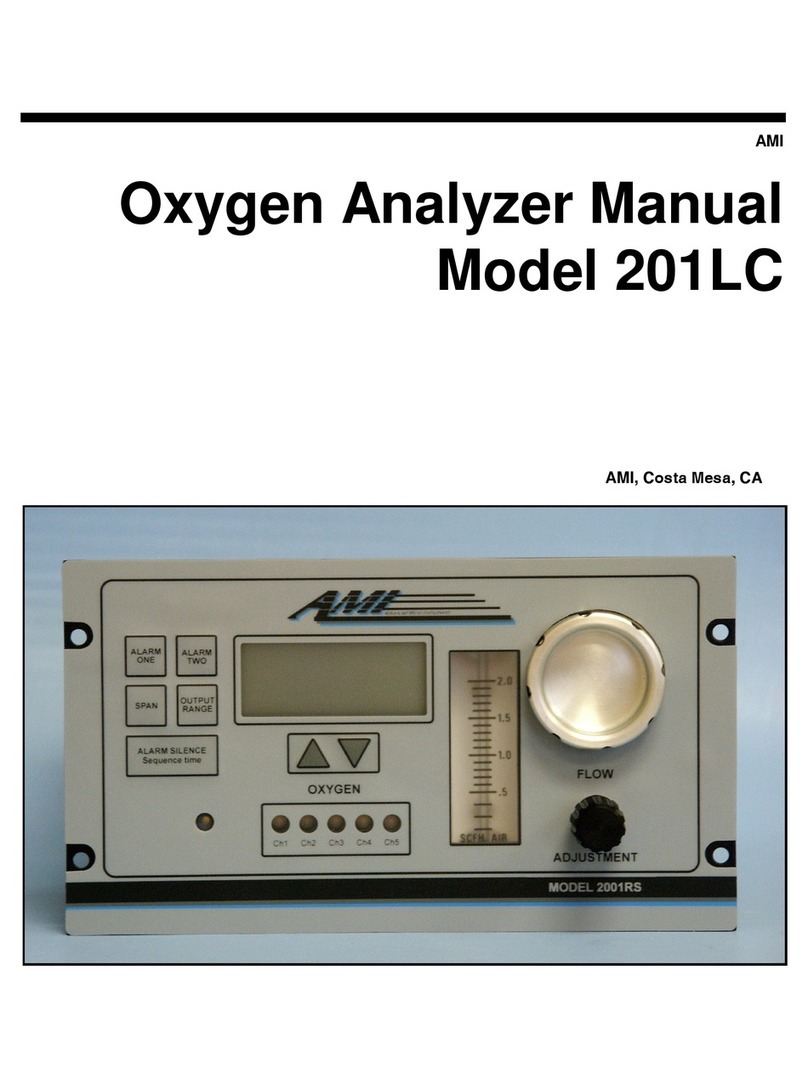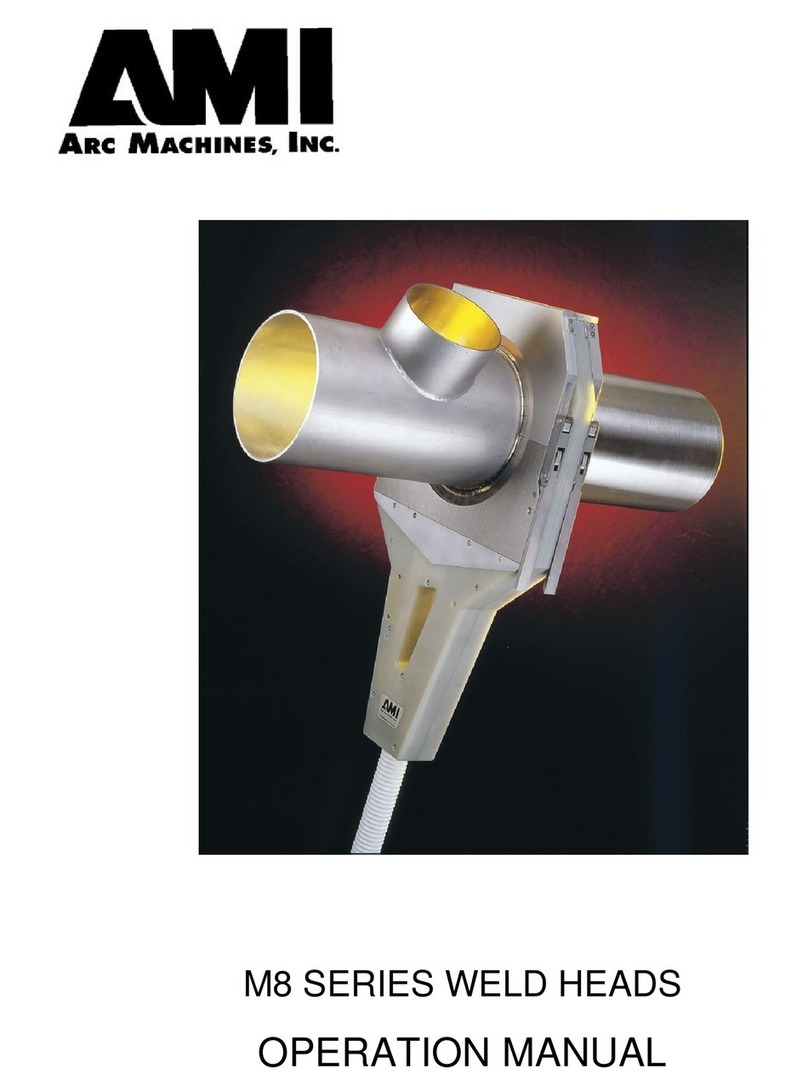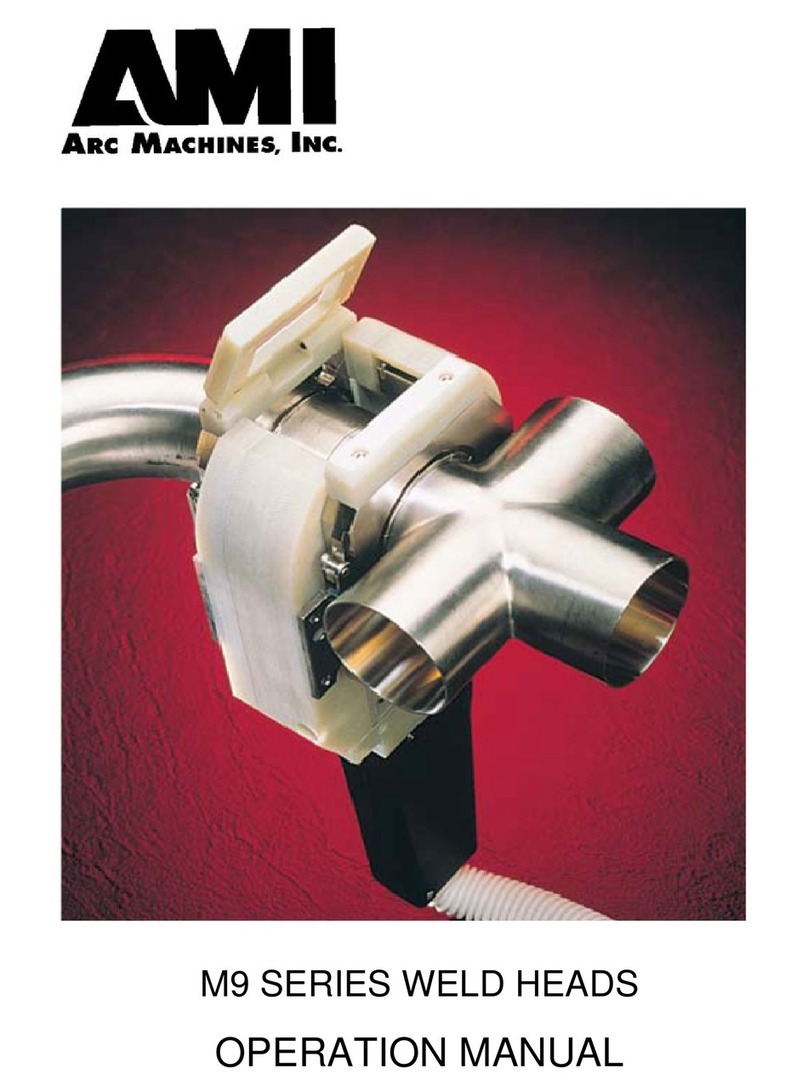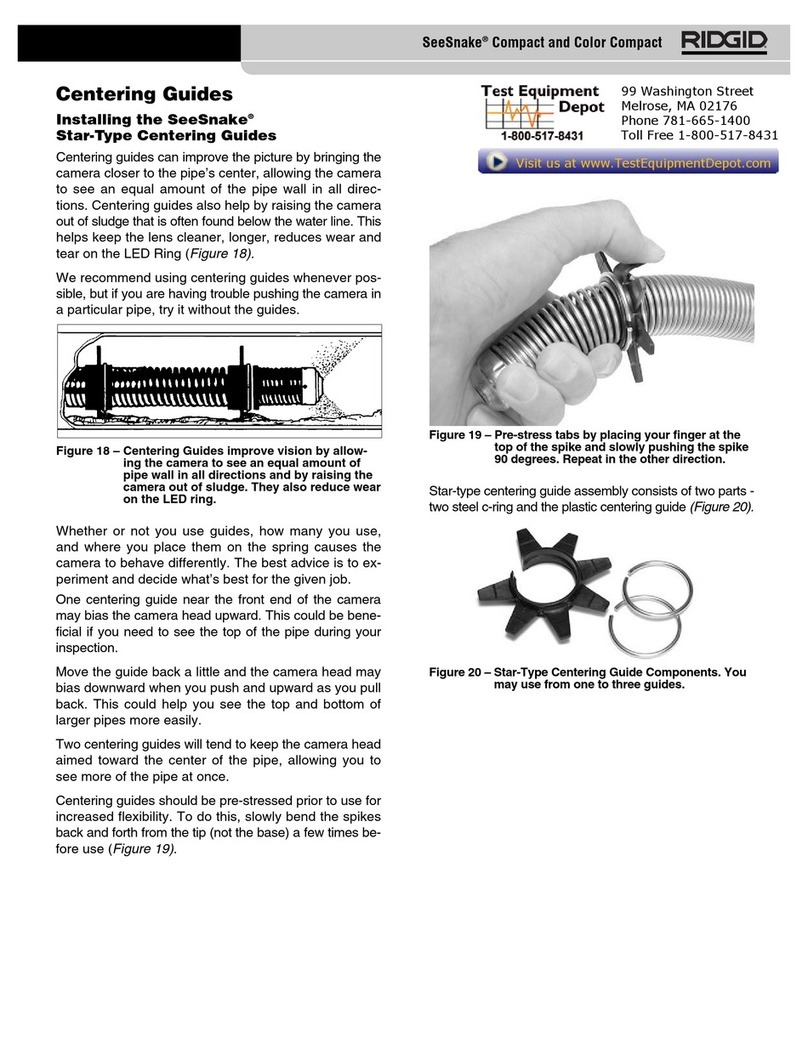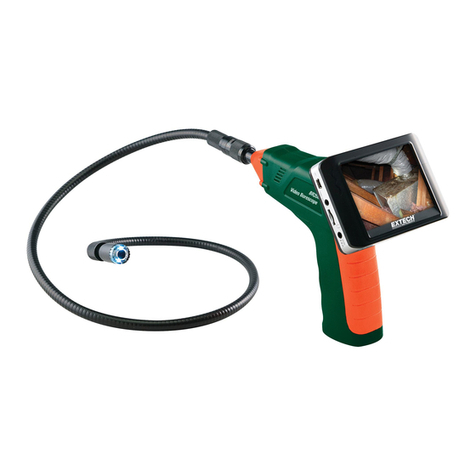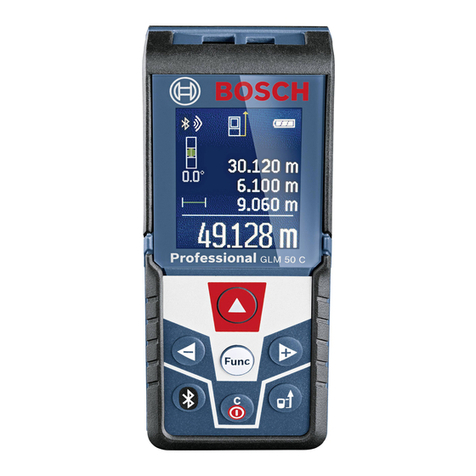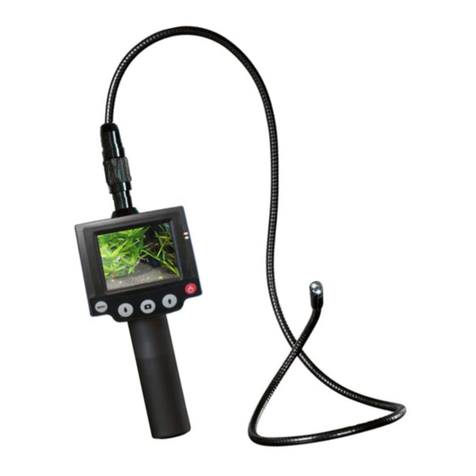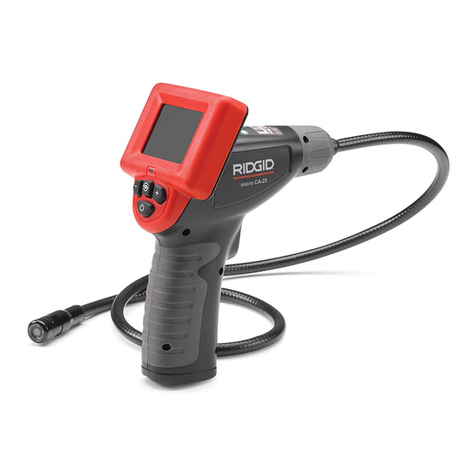
AMI Analyzer Manual Installation Procedure 6
11. Allow the sample gas to purge the unit for a few minutes. Make sure the cell cap is in
place.
12. Set up the alarms and the output range from the front panel of the analyzer.
13. Unscrew the cell cap, and install the oxygen sensor.
14. Remove the shorting tab on the sensor.
15. Stabilize for 45 seconds ONLY, adjust span to 20.9%.
16. Replace the Cell cap and tighten it down (hand tight).
17. Purge with sample gas for half an hour, or until the oxygen reading has fallen to low ppm
levels.
18. If desired, span with known calibration gas.
a) Connect a regulator (with Stainless Steel diaphragm ONLY) to span gas tank.
b) Bleed high pressure side of the regulator 7 times.
c) Bleed low pressure side of the regulator 7 times.
d) Shut off the regulator outlet valve and leak check all the tank fittings, gauges and
packing glands with Snoopor equivalent liquid leak detector (not spray).
e) Disconnect the sample tubing from the inlet port, either by physically removing it or by
using an external three-way valve.
f) Flow calibration gas WHILE you are connecting the span gas tubing to the inlet fitting
or the selection gas valve port. Allow the gas to purge through the fitting for about 20
seconds before you tighten it.
g) Press the ALARM BYPASS button, and adjust the time displayed to a suitable value
(typically 10 minutes).
h) Verify that the analyzer reads within about 15% of the span gas value.
i) If so, adjust the analyzer span (see below) until it reads the span gas value.
j) Let it go back to normal operation (the “SPAN” flag goes out on the LCD display), then
press the UP arrow and note the number displayed (the “Calibration factor).
k) Disconnect the span gas from the inlet fitting and reconnect the inlet tubing.
l) Turn off the valve on the span gas tank (so it doesn’t all leak out).
If the span gas reads worse than 15% wrong, something is wrong either with the gas, or with the
plumbing (you have a leak) or some other error. See the troubleshooting section for some ideas
about curing this.
